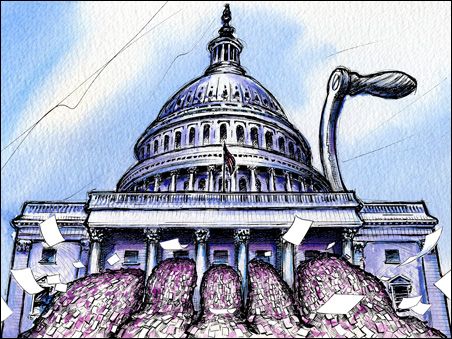The massive $2 trillion stimulus package enacted by Congress and signed in to law by President Trump on March 27, 2020 in response to the economic havoc wreaked by the COVID-19 pandemic contains a few passages that may ease the burdens of debtors in bankruptcy.
Nicknamed the CARES Act, for “Coronavirus Aid, Relief, and Economic Security Act,” the massive package contains tweaks and tune-ups to the bankruptcy code that possibly could keep certain Chapter 13 debtors afloat on their plan payments.
Buried deep in section 1113 of the new law is a provision that lets some Chapter 13 debtors stretch out their plan payments for up to a total of 84 months, or in other words, for up to seven years. Existing law provides that Chapter 13 plans may run from a minimum of 36 months to a maximum of 60 months, so debtors on a five year plan can potentially extend for an additional 24 months, and debtors on a three year plan can more than double the length of their plans by adding 48 additional months.
The main qualification for a longer payment plan is that debtors are experiencing a “material financial hardship” as a result of the Covid-19 pandemic. Please note that debtors seeking extensions do not have to have contracted the virus — only to have suffered some sort of objective financial setback (e.g. layoff) due to it.
What’s the catch? Well, the main one is that in order to stretch out payments, debtors have to have already filed their cases AND they need to have confirmed Chapter 13 plans in place as of the date the law was signed — March 27th.
That means that individuals seeking Chapter 13 protection now won’t be able to benefit from this clause, and are restricted to the usual 3-5 year plan length, even if they have a hardship to the virus.
It also means that debtors who have filed for Chapter 13, but whose plan has not yet been confirmed are not eligible for the stretch-out. This is a severe limitation in a district like Massachusetts, where there is a long lag time between filing a case and getting the plan confirmed, even in the best of circumstances.
What remains to be seen is if trustees and bankruptcy courts will allow “gaps” in payments — in other words a few months of $0 dollar payments followed by a resumption of the usual amount somewhere down the road. Because trustee offices are funded by a hopefully steady stream of payments, the best guess is that will not be permitted, or will be severely curtailed (perhaps to a max of three months), because applying such a tournequet to the payment stream might make the trustees more broke than the debtors.
Instead, the most likely form of relief is an estimated 30% or so reduction in the size of the plan payment for a hypothetical debtor with a 60 month plan who elects to extend payments to 84 months.
Bankruptcy lawyers and their clients should keep a close watch on Congress in the coming months — there is probably a decent probability that the “before/after March 27th” distinction could be fixed by a future bill, enabling all Chapter 13 debtors to partake in a humane break enacted in a time of crisis.
Debtors and lawyers should also be aware that the CARES Act is loaded with so-called sunset provisions, meaning the various breaks enacted invariably come with an expiration date as well as a start date. Most provisions are set to expire one year after passage, although that could be extended based on what actually happens to the economy during the latter part of 2020.
by Doug Beaton
